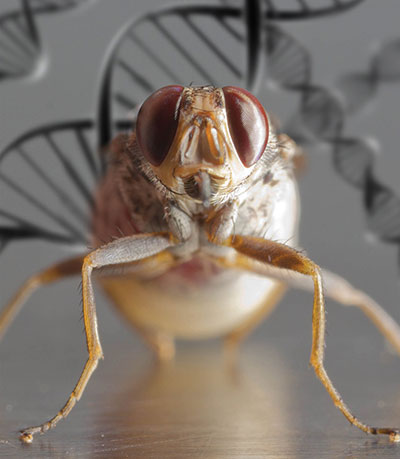Tsetse genes identified
A recent study by icipe that has identified the genes responsible for chemical sensing in tsetse flies could help to improve the way that the insects are managed, because they carry the trypanosome parasite that causes human sleeping sickness and the livestock disease nagana.
In a paper published in the February issue of PLoS Neglected Tropical Diseases, icipe researchers and collaborators report that they have discovered that different species of tsetse responsible for transmitting sleeping sickness and nagana use the same set of genes to find their hosts (humans or animals). This is surprising, considering that tsetse fly species differ in their responses to animal odours.

With funding from the German Academic Exchange Service (DAAD) through icipe’s African Regional Postgraduate Programme in Insect Science (ARPPIS), Rosaline Macharia undertook this research at icipe as part of her PhD in Bioinformatics. Tsetse flies, like mosquitoes, search for their food by detecting chemicals that the hosts produce (such as carbon dioxide). The research found that tsetse flies have fewer chemosensory genes as compared to other insects.
She explains: “Tsetse flies only feed on blood, which means that they do not need the same number of chemosensory genes as other insects that feed on other hosts. However, tsetse flies have more genes that can sense carbon dioxide than other insects. These genes are the key players for the tsetse fly being able to find their food. If it is possible to disrupt these genes, then the tsetse fly is less likely to feed on humans and animals, and therefore, less likely to transmit sleeping sickness”.
“Overall, there are no major differences in the numbers or types of genes for sensing chemicals that are present in different species of tsetse, despite the fact that they respond differently to chemicals in the environment. This research is exciting, because it means that we can develop a unified approach to control of the tsetse fly”, adds Daniel Masiga, Head of the Molecular Biology and Bioinformatics Unit at icipe.
The researchers recommend further studies to identify what other chemicals the tsetse fly responds to, to develop more effective baited traps.
For more information: http://journals.plos.org/plosntds/article?id=10.1371/journal.pntd.0004421

